| The Grand Rapids depot, now operated as a visitor's center. Looks like a dollhouse now. |
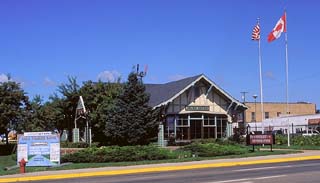 |
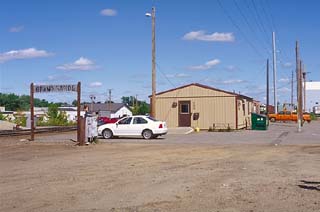 |
In contrast, the Grand Rapids yard office, which was built in the 1980s to replace the
depot, does not look like a dollhouse. I didn't get a chance to look inside, but I bet it smells
like stale coffee and cigarettes, like any real depot. |
| Yard power today is GP-39M BNSF 2820, a former GN GP-30. Behind the geep is a BN "shoving
platform", a caboose rebuilt for yard service. Not quite as charming as the former CB&Q wide vision caboose
(BN 10143) that used to be a regular on the Deer River local back in the 1970s. |
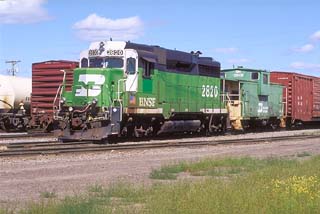 |
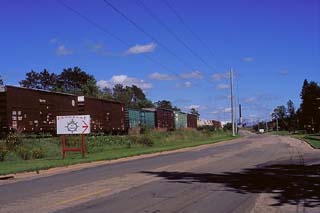 |
At the western edge of the Grand Rapids yard, empty boxcars are still stored for eventual
loading at the Blandin Paper plant. The sign in the photo advertises the Showboat, an annual late summer
tradition in Grand Rapids. |
About a mile west of Grand Rapids, Seyton yard and the Tioga mine spur were constructed
during the late 1950s. Tioga was the westernmost mine on the Iron Range, and only produced ore for a few
years before closing in the early 1960s. In the early 70s, Iron Range plastics moved into the old mine
buildings, and took a few boxcars of plastic resin. Later on, the Blandin Company opened a particle board
plant west of town, and a spur was constructed off of the Tioga Mine Spur to service the plant.
Nowadays, the Tioga spur beyond the Blandex plant has been abandoned, but the spur and Seyton yard still
exist. Shown here is the switch that leads from Seyton up to the spur. Back in the 1970s, there was an
ABS signal at the switch to indicate that the spur was occupied, a legacy of the ore days, but the signal
has since disappeared. |
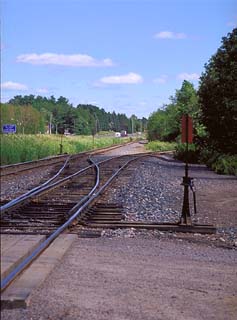 |
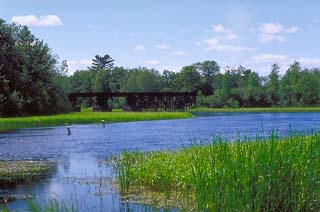 |
A few hundred feet after leaving Seyton, the spur crosses this very heavy trestle across
the Mississippi River. |
| The following day, the skies turned overcast, as they tend to do in northern Minnesota. I
went back to the yard to watch the Grand Rapids local do some switching. That's the Blandin paper plant
in the background. |
 |
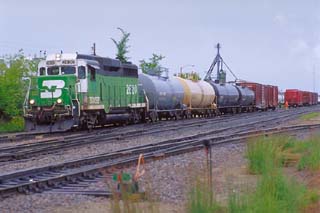 |
The brakeman steps in and makes a cut. |
| Overcast skies begin to rain, and the local pulls the cut across one of the many grade
crossings that cut across the yard. |
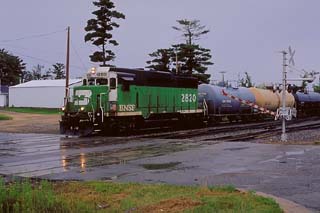 |
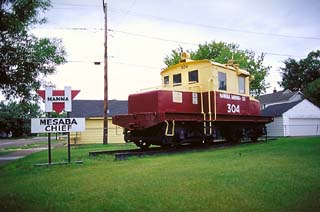 |
I decided to take one last quick trip up Da Range, on Highway 169, just to see what was
left of the mining industry. In Keewatin, which is still home to an active taconite mine and plant, I found
the former Hanna Mining Company 304, a GE electric steeplecab. Hanna used electric locomotives to haul raw
ore out of the pits to the crushers and washing plants, which eventually discharged ore to tipples on the GN/BN
and DM&IR. Note the unique offset trolley pole system, which kept the cantenary away from the tops of the
ore cars, allowing them to be loaded by large steam or electric shovels. |